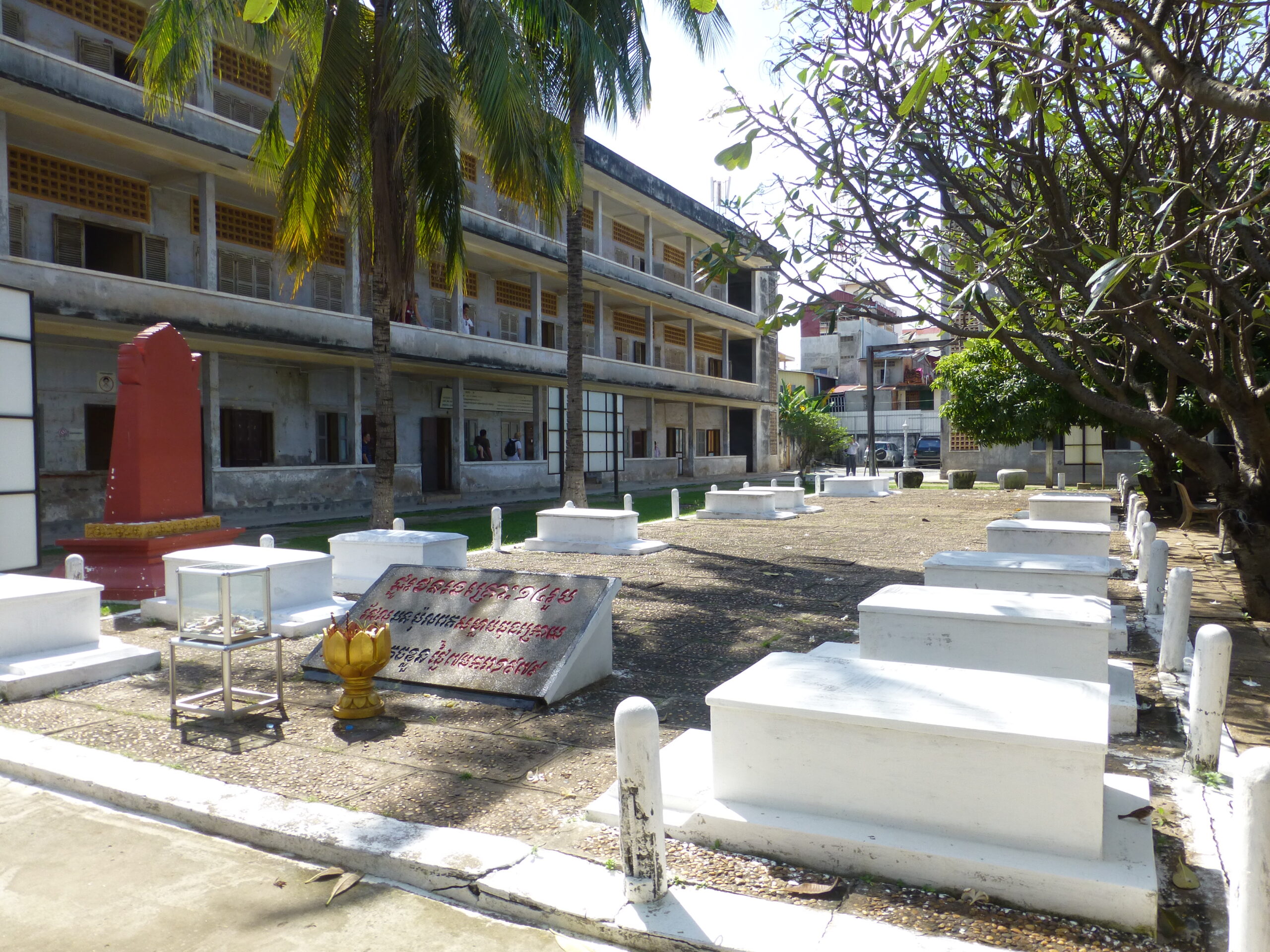When you travel through Cambodia, you can’t avoid visiting the Killing Fields and the Tuol Sleng Museum. These places confront you in a harsh way with the horrific history of the Khmer Rouge under Pol Pot. In this article, I’ll take you through my personal experience and give you all the practical information for your visit.
The moment it truly sank in
At the end of 2012, I traveled through Cambodia. During my trip, I started to delve into the horrors that the Khmer Rouge had inflicted. What atrocities had been committed? I had of course heard the names Pol Pot and Khmer Rouge mentioned before, but I had never really taken the time to dig deeper.
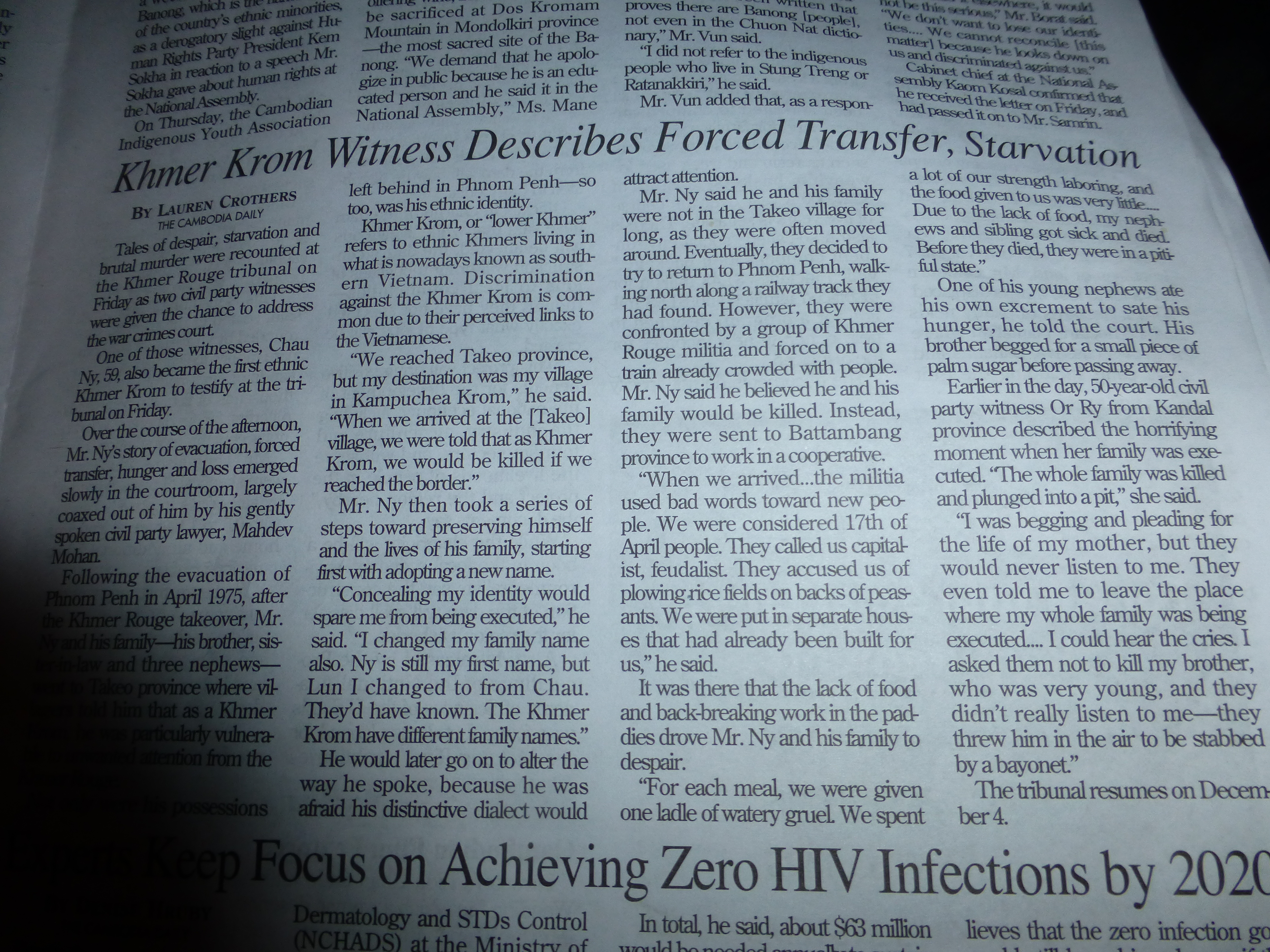
In Phnom Penh, I read newspaper articles about victims and court cases that were still ongoing even during my visit. That’s when it really hit me. This happened so recently. Pol Pot and the Khmer Rouge were in power from 1975 to 1979. I was born in 1974. That means I was already alive when these terrible things were happening. I could barely imagine it.
In The Netherlands, we commemorate the Second World War and the persecution of the Jews every year. But a comparable genocide took place in Cambodia in 1975. People who didn’t fit Pol Pot and the Khmer Rouge’s ideal were arrested, tortured, and ultimately murdered.
Tip: A combination tour of the Killing Fields and Tuol Sleng provides valuable context to these emotional places and helps you better understand the history.
The horrifying numbers
- To get an idea of the scale of the horror, these numbers help:
- The Khmer Rouge regime ruled for 4 years (1975-1979)
- 20,000 mass graves were discovered
- 1,386,734 victims have been identified in those graves
- 1.7 to 2.5 million victims fell in total due to the regime
Through this visit, I also realized that these kinds of terrible things still happen today. It gave me an uncomfortable feeling. You see the images on the news of course, but at some point you build up a kind of immunity to it. That’s obviously self-protection. You see it but you can’t do anything about it, it just happens.
History of the Khmer Rouge in brief
The Khmer Rouge under the leadership of Pol Pot took power in Cambodia in 1975. Their goal was to create an agrarian communist utopia. This led to:
- Evacuation of all cities
- Abolition of money, religion, and family
- Murder of intellectuals, teachers, doctors
- Forced labor in the countryside
- Systematic extermination of ethnic minorities
Many died from hunger, exhaustion, disease, or were systematically murdered at places like the Killing Fields of Choeung Ek.
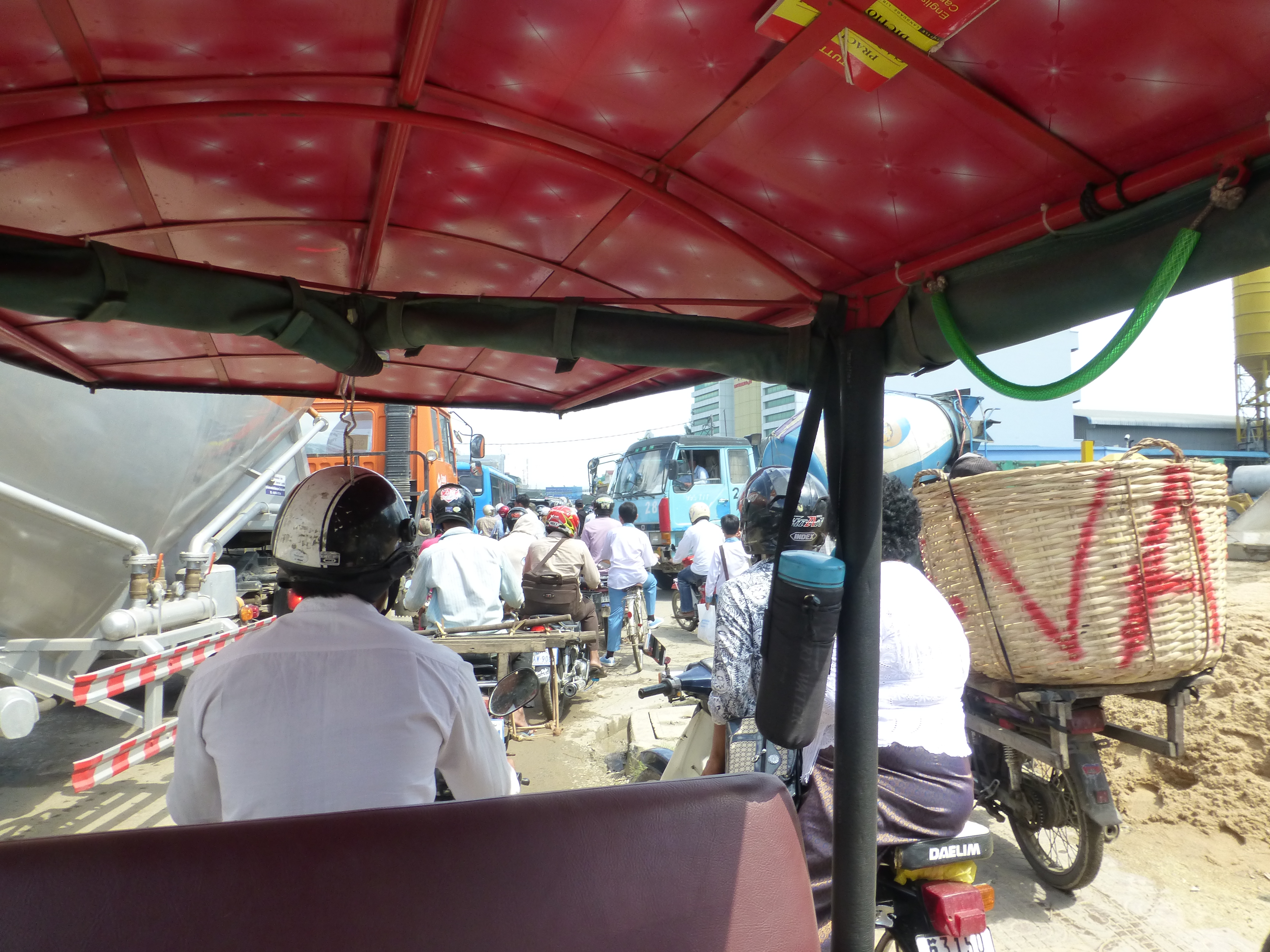
My visit to Choeung Ek – The Killing Fields
The journey there
It was a beautiful day. I got into a tuk-tuk and had myself taken to Choeung Ek, as the Killing Fields are officially called. They’re located just outside the city of Phnom Penh. The route took me through heavy traffic to the outskirts, after which we drove through rice fields and I watched the Cambodian landscape pass by.
It is approximately 15 kilometres from the centre of Phnom Penh. You can hire a tuk-tuk for around $15 return, or book an organised tour with a pick-up service.
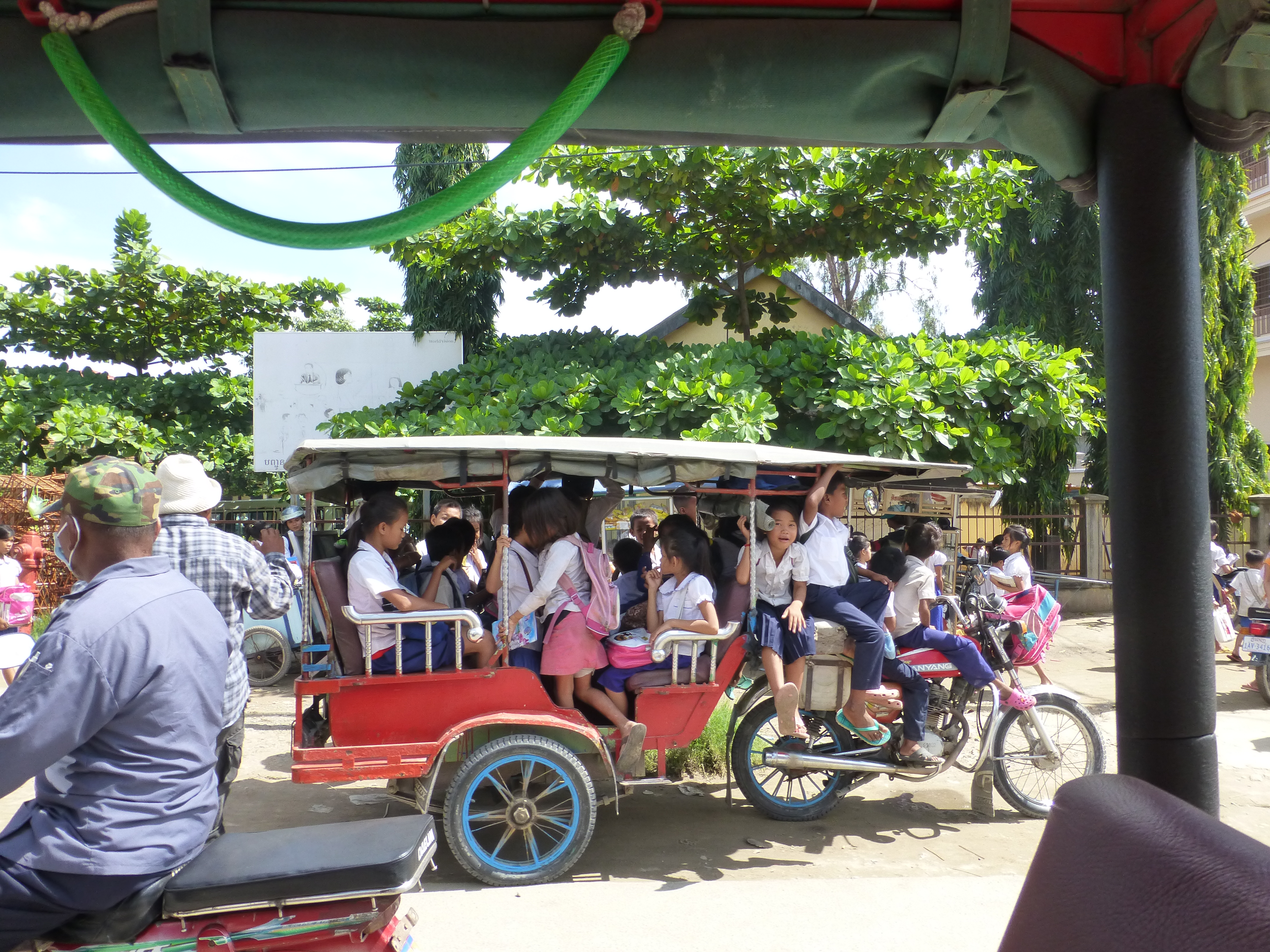
The Memorial – a sea of skulls
Upon arrival at the museum, because that’s what it is nowadays, I received headphones and a booklet with explanations and a map. I could walk around myself and at each number on the map, I pressed the corresponding number on my audio guide to hear the information.
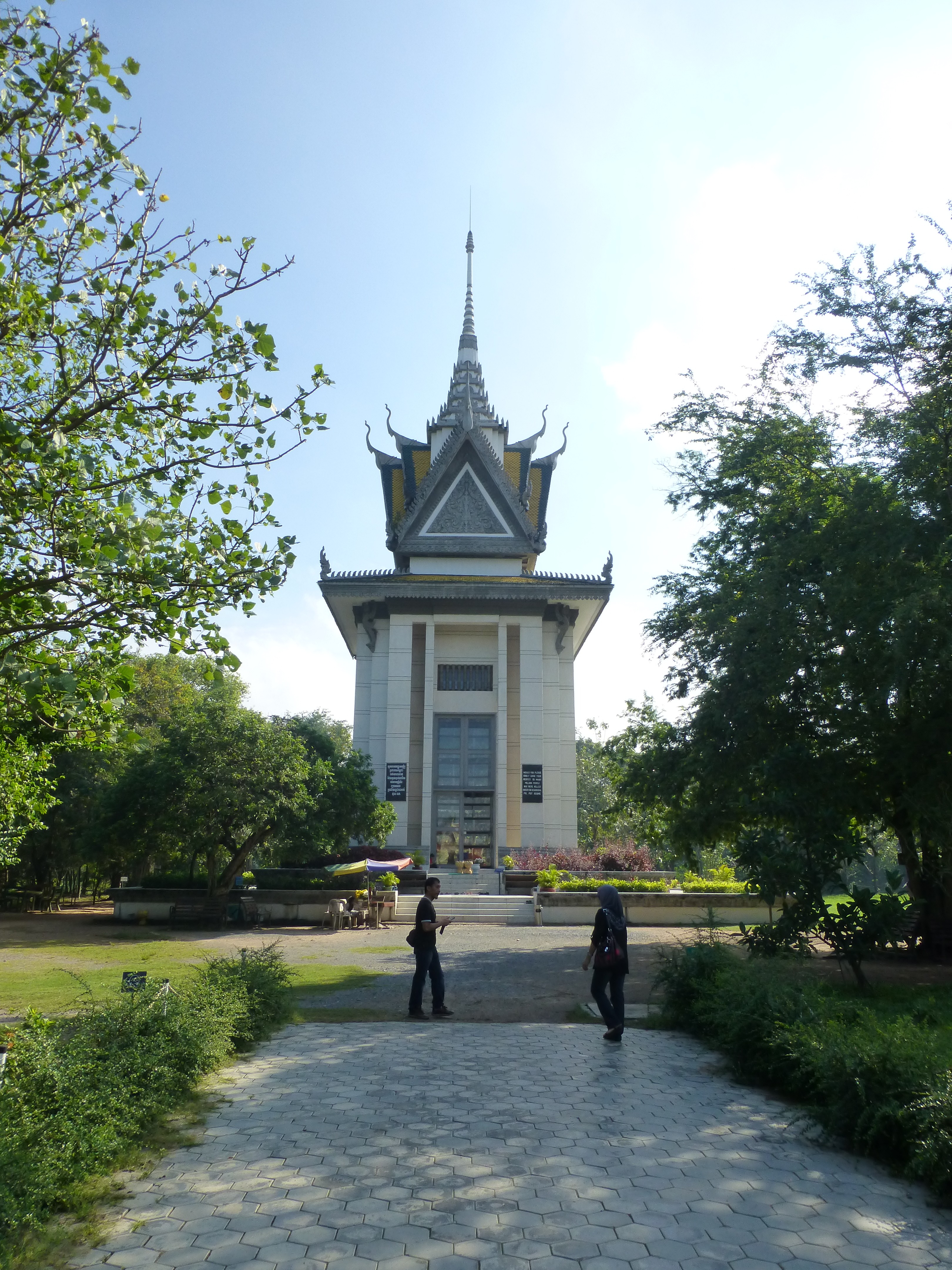
The first thing that stands out is the tall, square building. Built to commemorate all the victims who fell here. What you see is overwhelming: an enormous number of victims’ skulls, visible behind glass. You also see a lot of clothing and personal belongings.
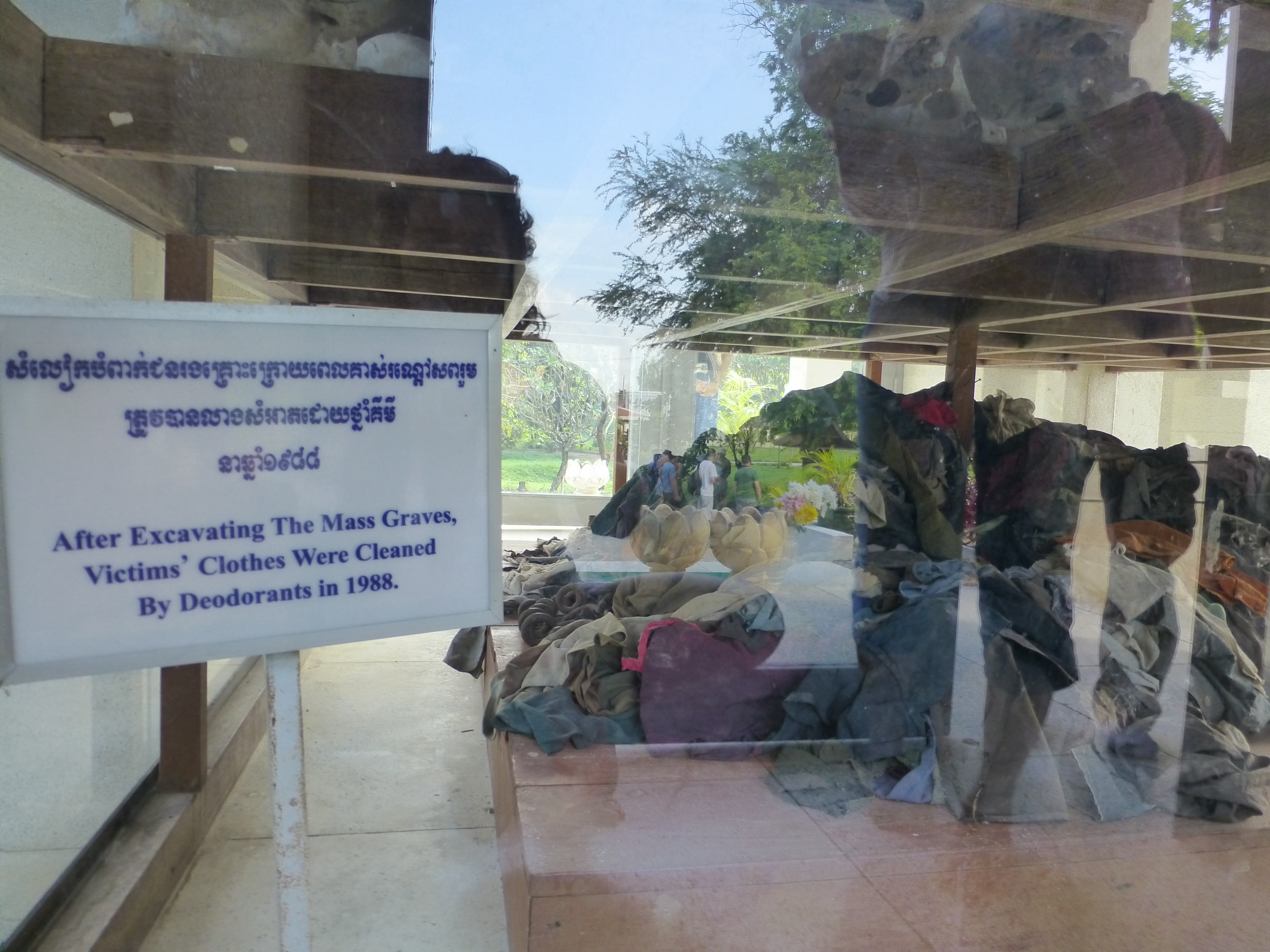
On the ground floor lie the clothing and possessions that have been recovered. On all other floors, you see the thousands of skulls that have been excavated, floor after floor.
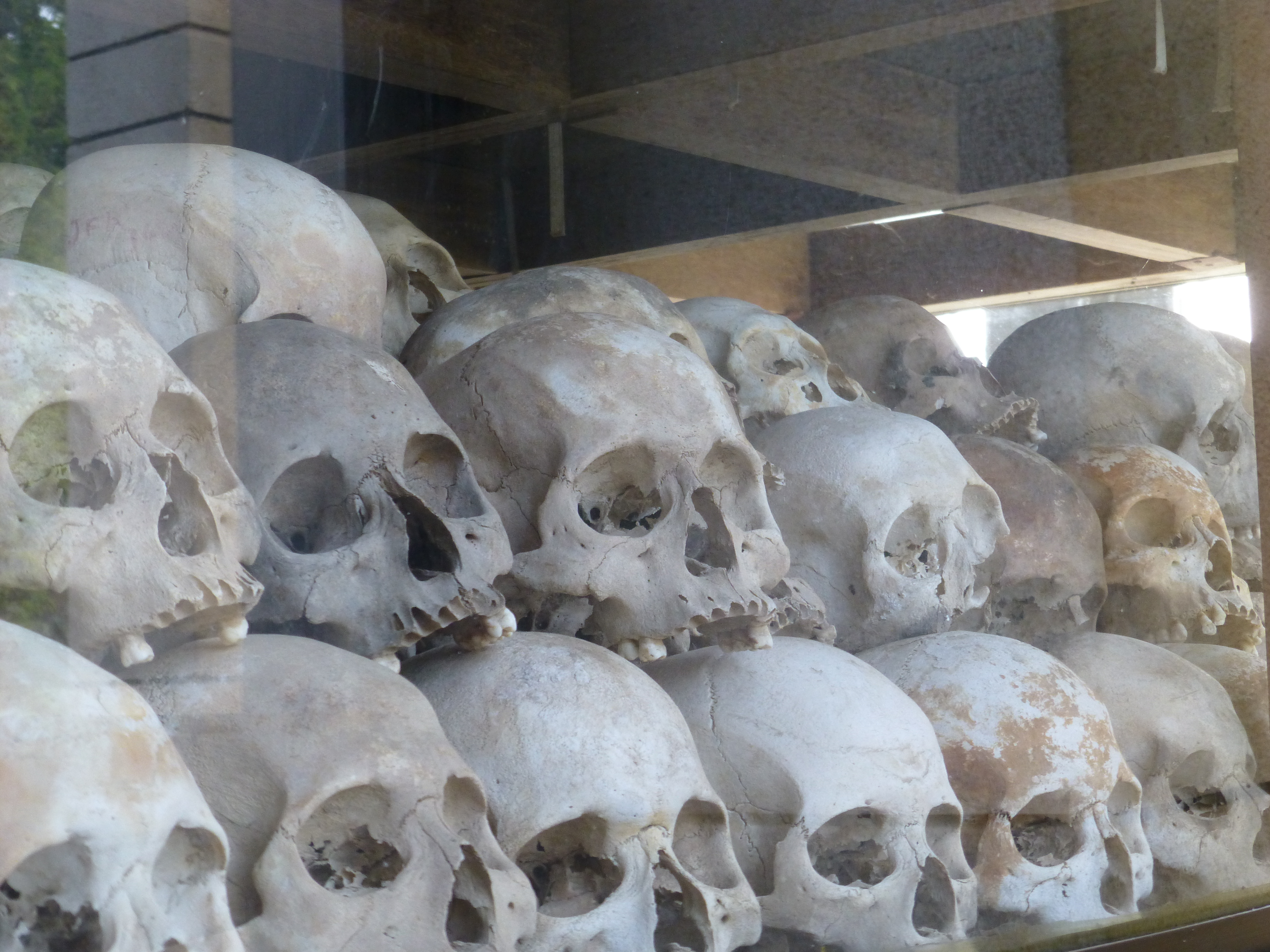
The voice of a survivor
As I continued walking across the grounds, I heard through the audio guide the story of someone who had survived. I heard a man speak about the horrific things he had experienced and endured. It was translated into English, but meanwhile you could also hear his voice in the background.
It was incredibly moving. That gave me the chills. Standing on the spot where those terrible deeds actually took place, while hearing the voice of someone who survived. This feeling is indescribable, it grabs you by the throat.
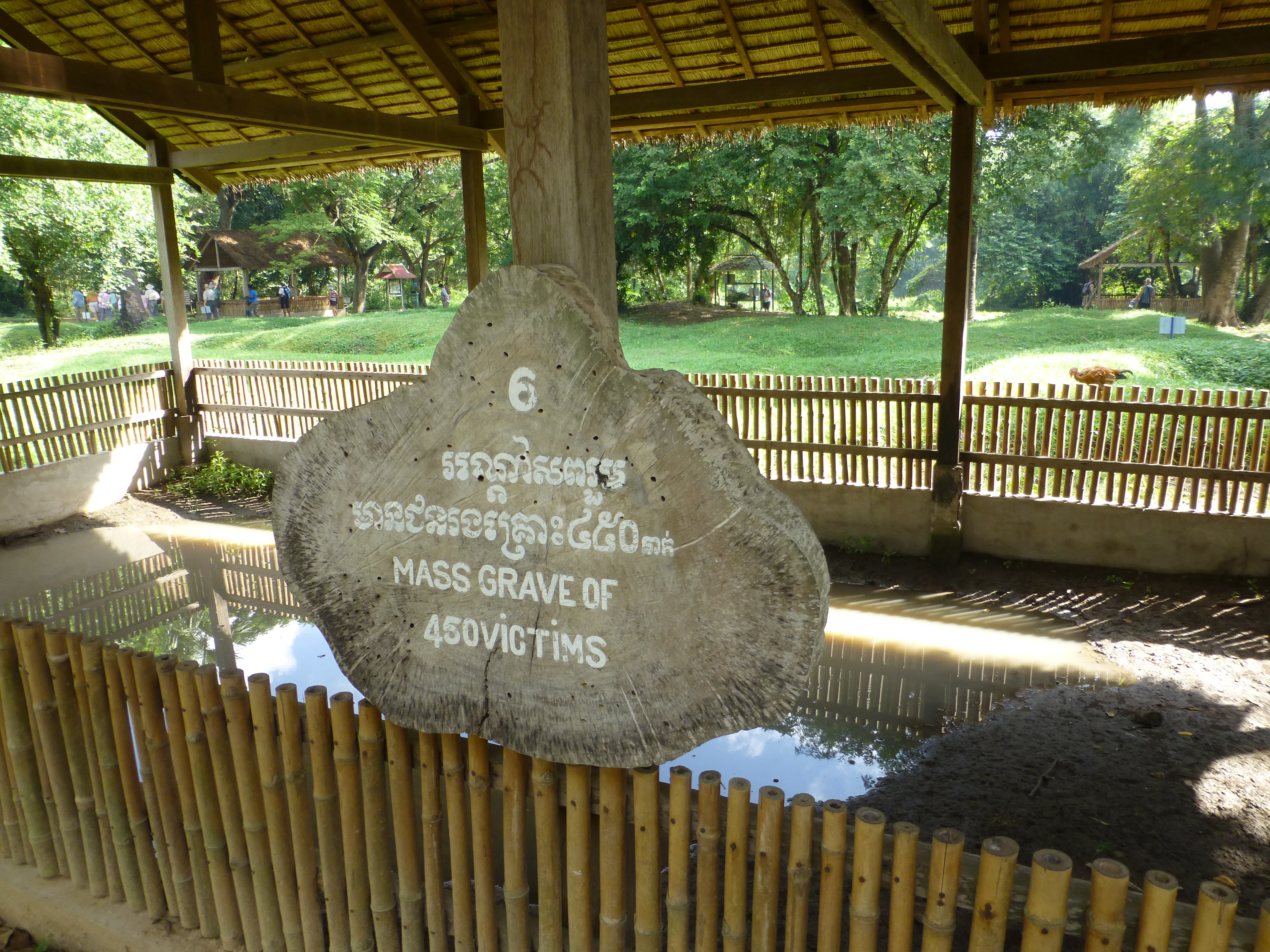
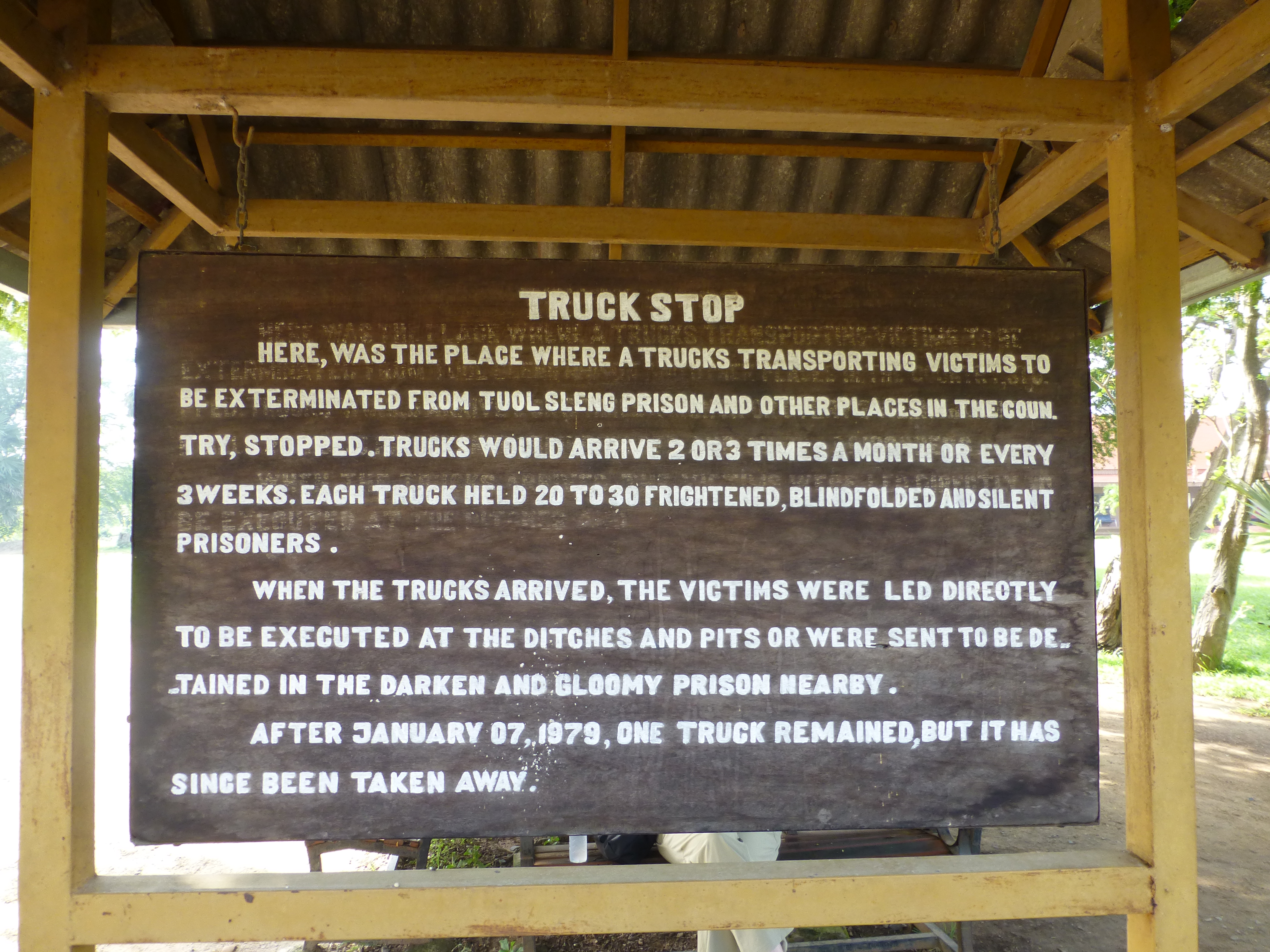
At various places you walk past, you get descriptions of the tortures that were carried out there. People were murdered by being beaten to death with a shovel or other tool. Apparently it was too expensive to purchase actual weapons. The suffering has been enormous. It’s truly incomprehensible.
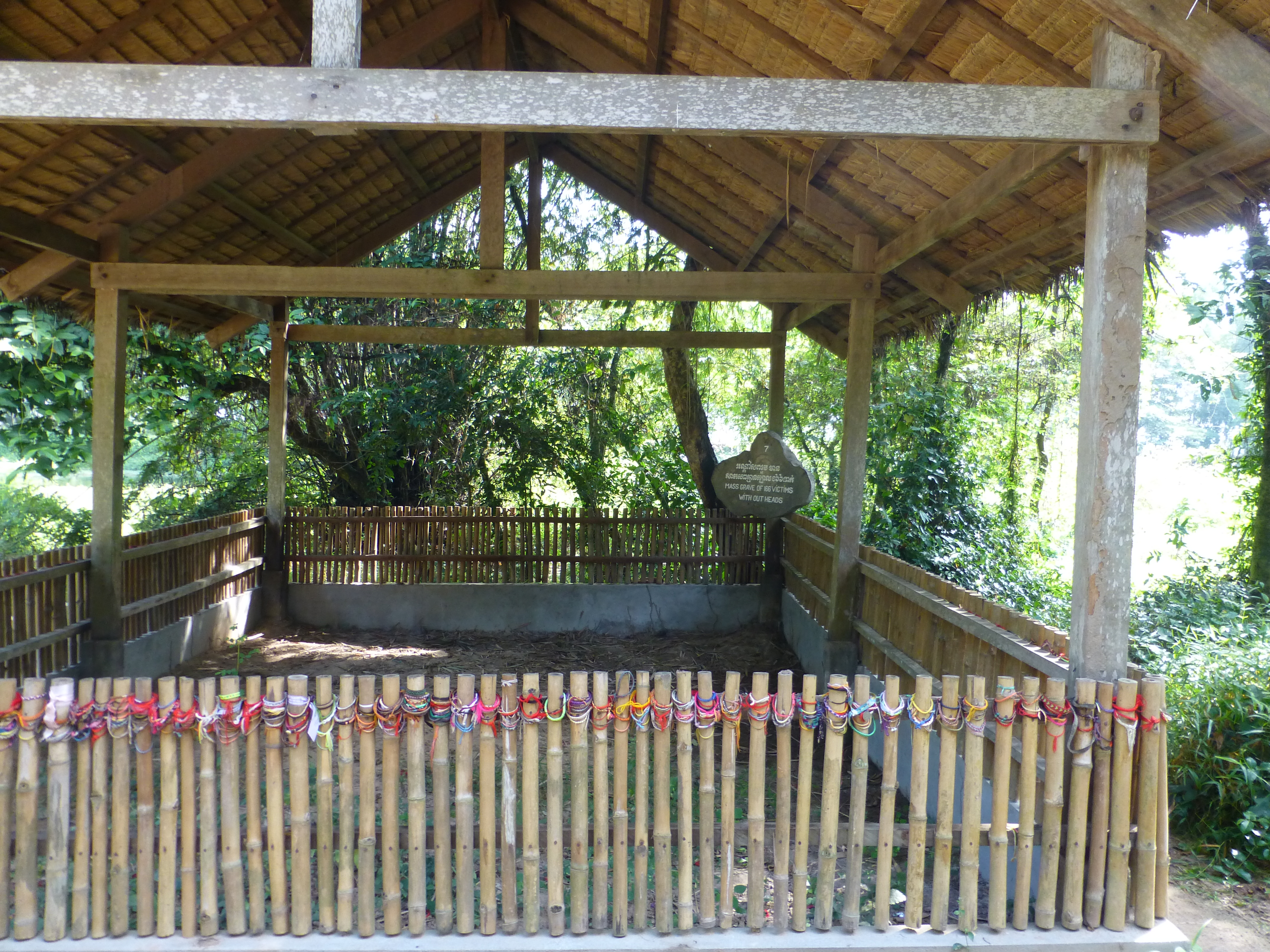
The Killing Tree – the lowest point
At one point I stood by a tree: the Chankiri Tree, also known as the Killing Tree. There were hundreds of colored ribbons hanging on it. The story associated with this tree is unimaginably heavy.
Against this tree, small children and babies were beaten to death. I literally felt sick. I stood by that tree and tried to imagine how much blood had been spilled here. Right next to the tree was a cordoned-off area where countless bone remains and clothing remnants had been found.
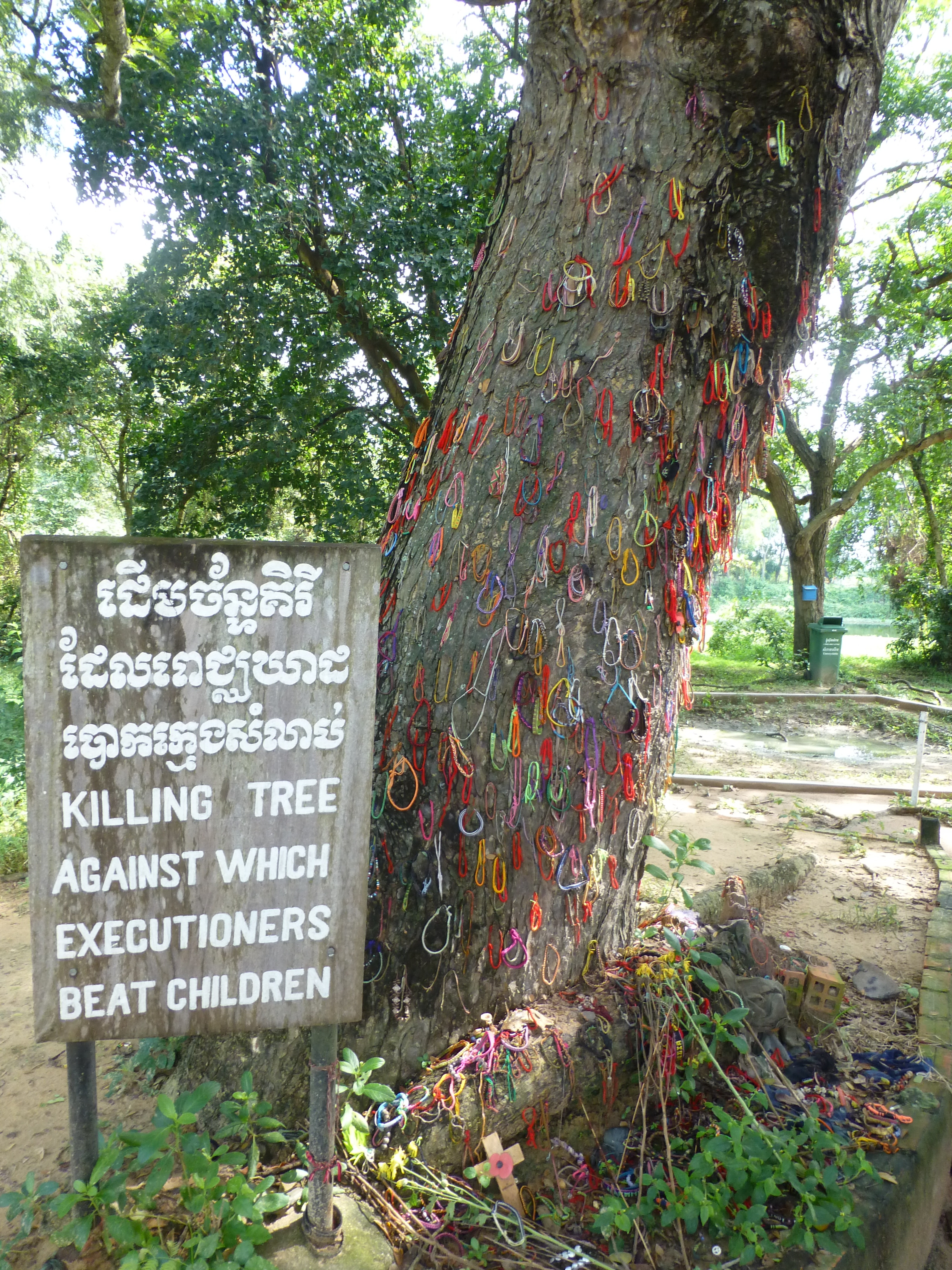
Clothing emerging from the ground
Throughout the entire grounds, you see pits that served as mass graves. The bizarre thing is: clothing is still emerging from the ground throughout the entire grounds. Through weather and wind, this material keeps coming to the surface. There’s so much, so unbelievably much. A lot has already been recovered, but there’s still more.
Some claim that this piece of Khmer Rouge history isn’t authentic. That the clothing lying here doesn’t date from that period and that everything has been recreated. But even if that were true: the tortures happened here, at precisely this spot. You simply can’t comprehend it. So intense.
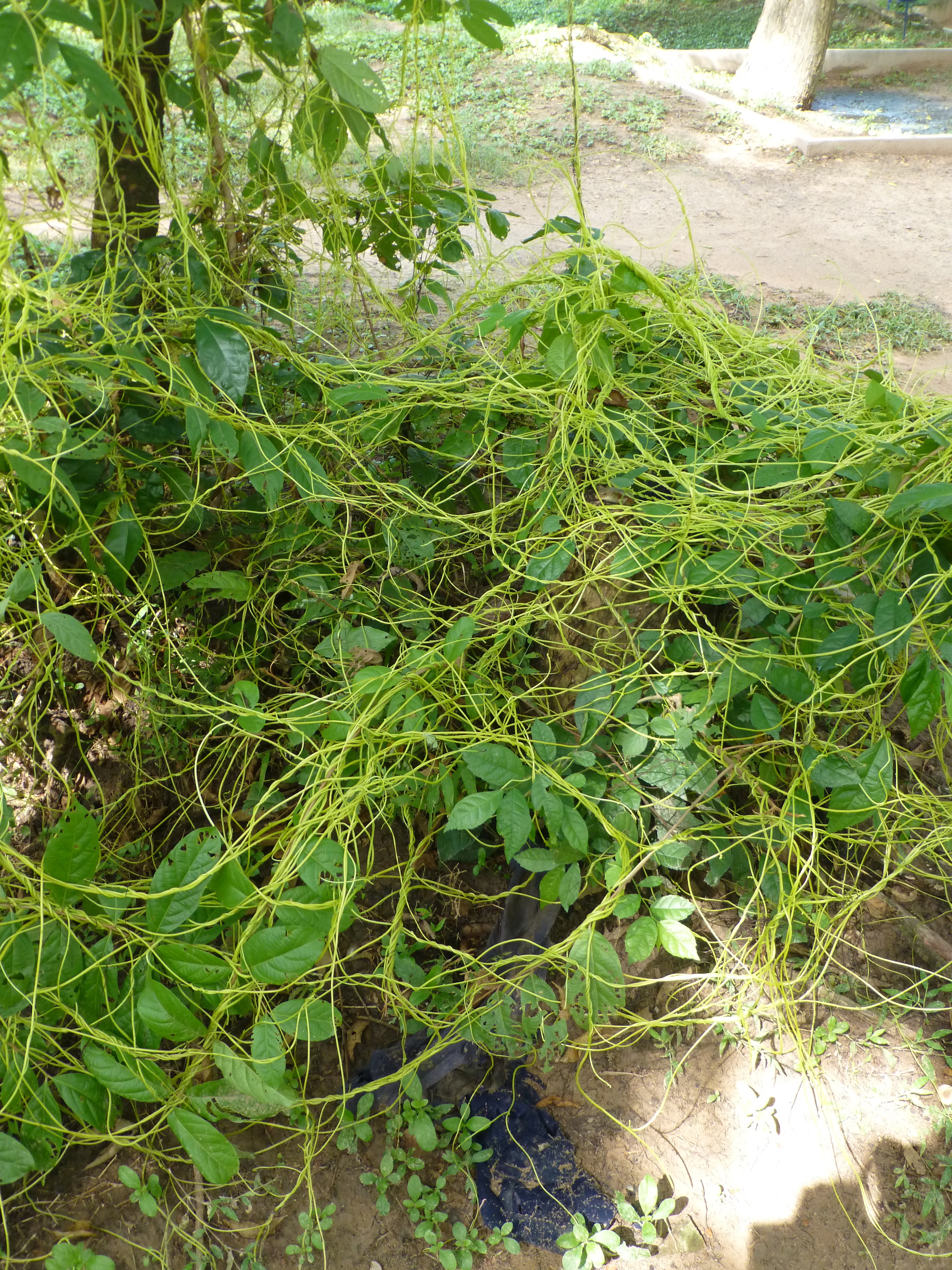
Between the greenery, you see various pieces of clothing sticking out of the ground everywhere. These keep coming to the surface through natural processes.
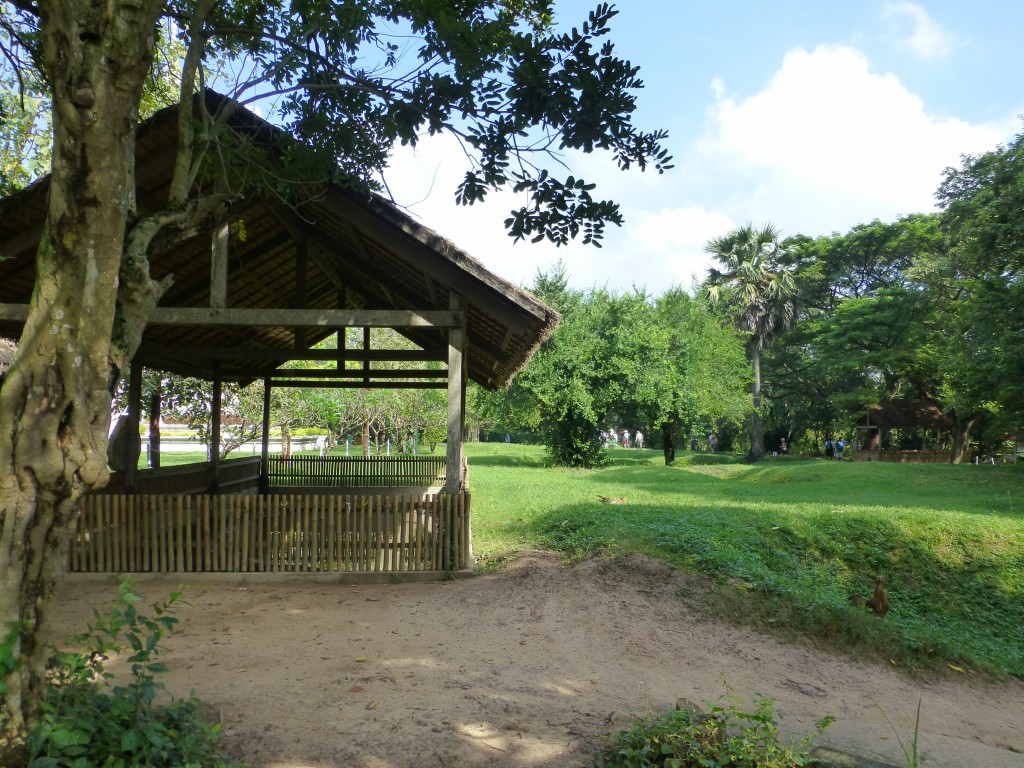
Tuol Sleng – Former Office S-21
From school to torture center
After this emotional visit, my tuk-tuk driver took me to Former Office S-21, nowadays better known as Tuol Sleng. This was originally a regular school that was taken over by Pol Pot’s regime to hold prisoners. The most horrific tortures by the Khmer Rouge took place here.
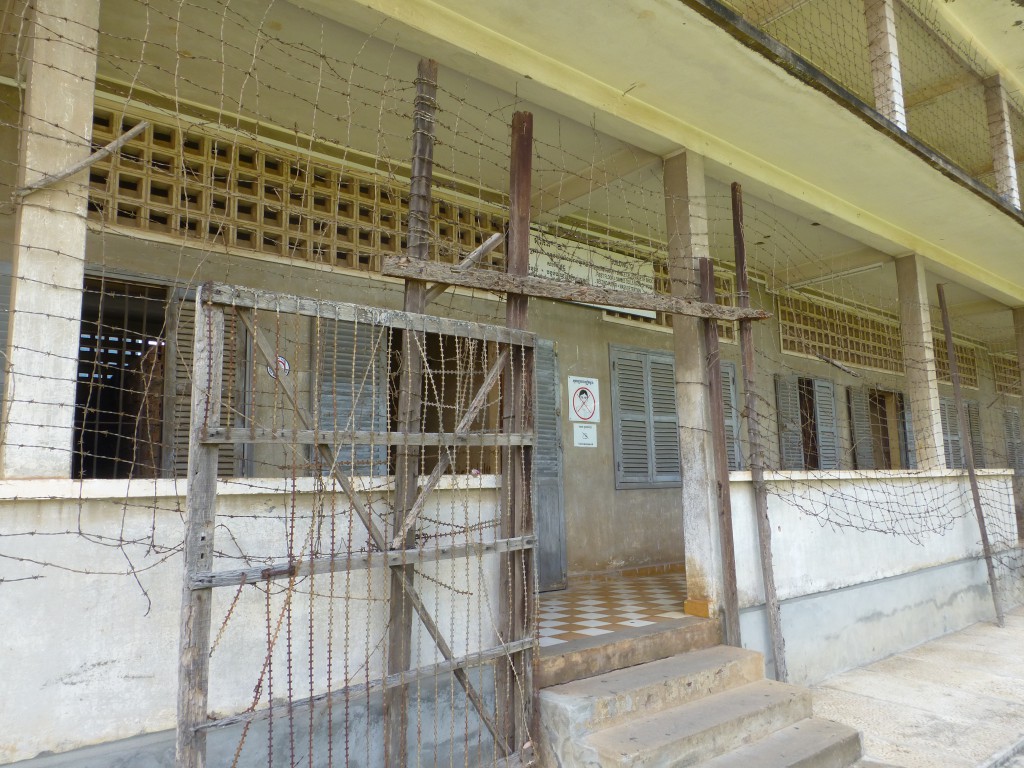
The visit is at least as impressive as the Killing Fields themselves. There are an enormous number of photos of victims and you can read a lot of documentation about their testimonies.
Faces you won’t forget
You won’t forget the photos of the prisoners. The expression on all those faces. The horror they had already seen, or what was still to come. It cuts through your soul.
Most of the testimonies you read are from ordinary people with everyday life stories. Not always special or exceptional individuals.
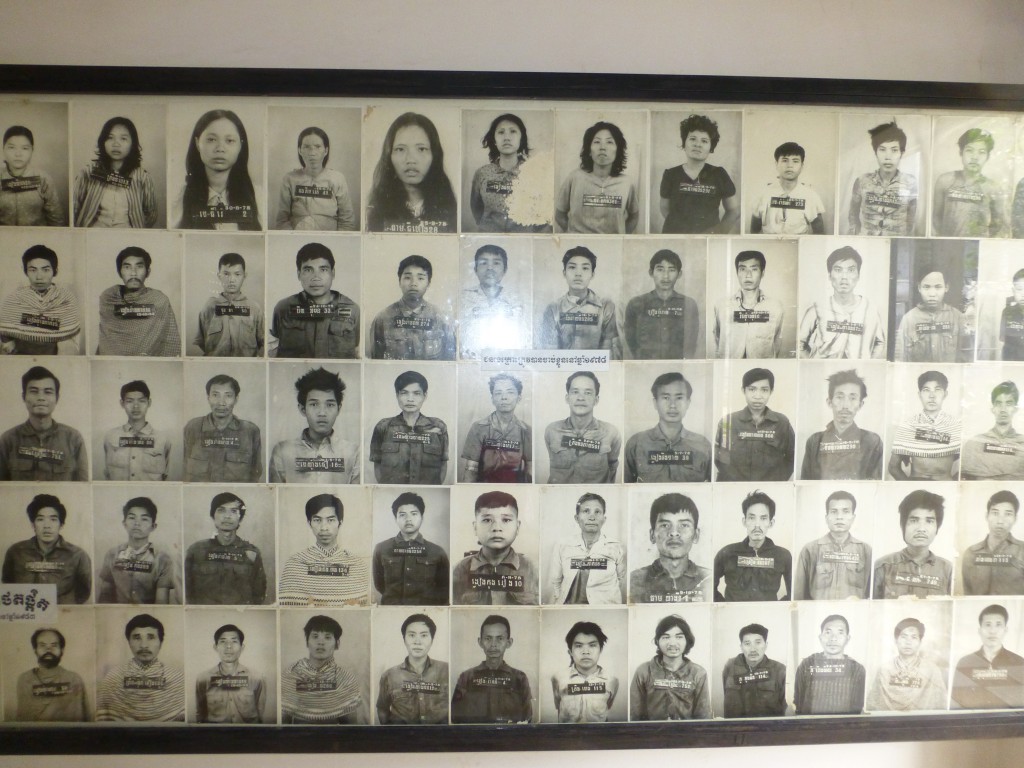
Yet they were suspected of resisting the regime. Through gruesome torture, they often confessed exactly what the interrogators wanted to hear. After that, the prisoners were transported to the Killing Fields to be murdered there. However, many had already died in Tuol Sleng itself from the horrors inflicted upon them.
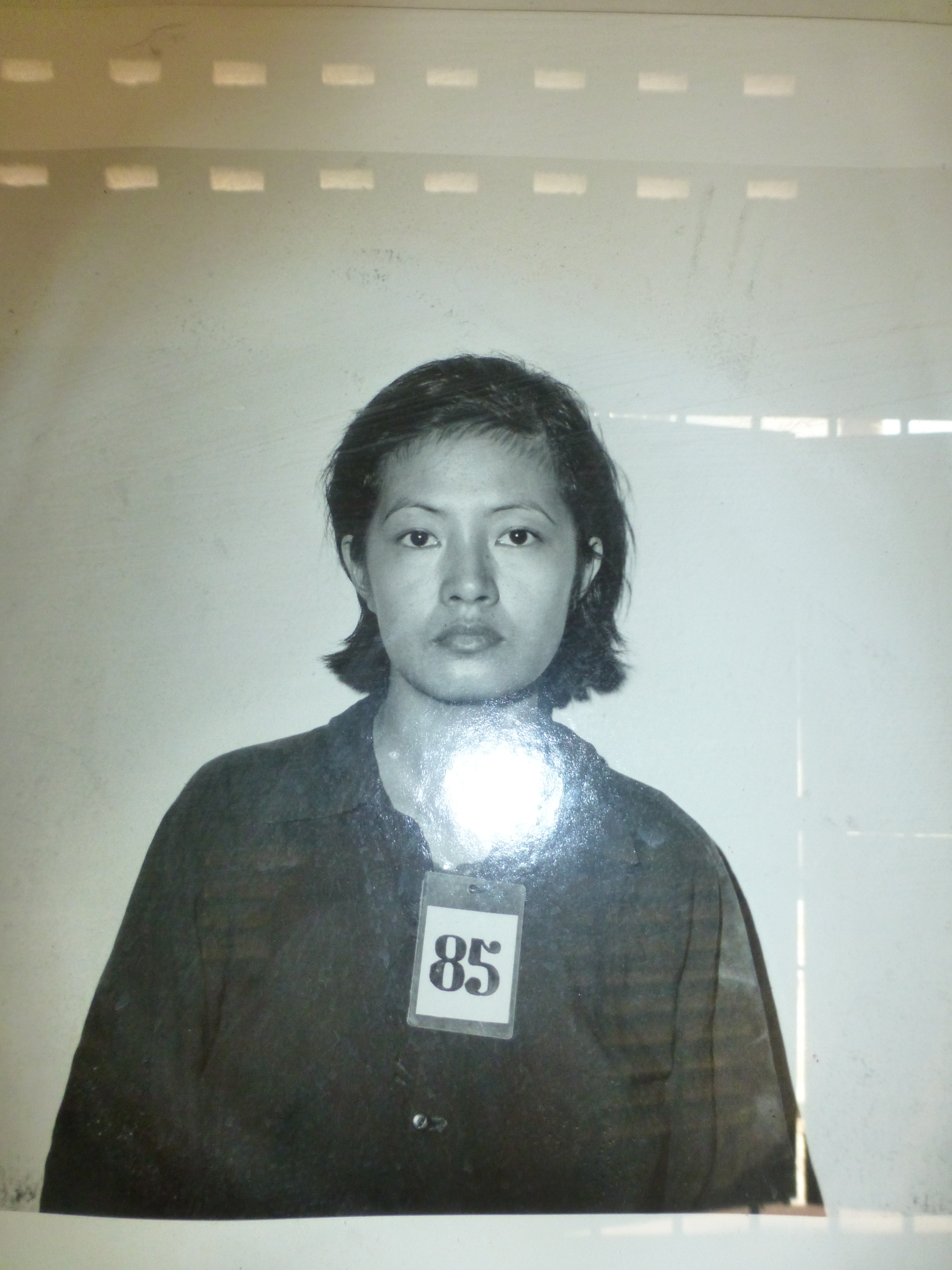
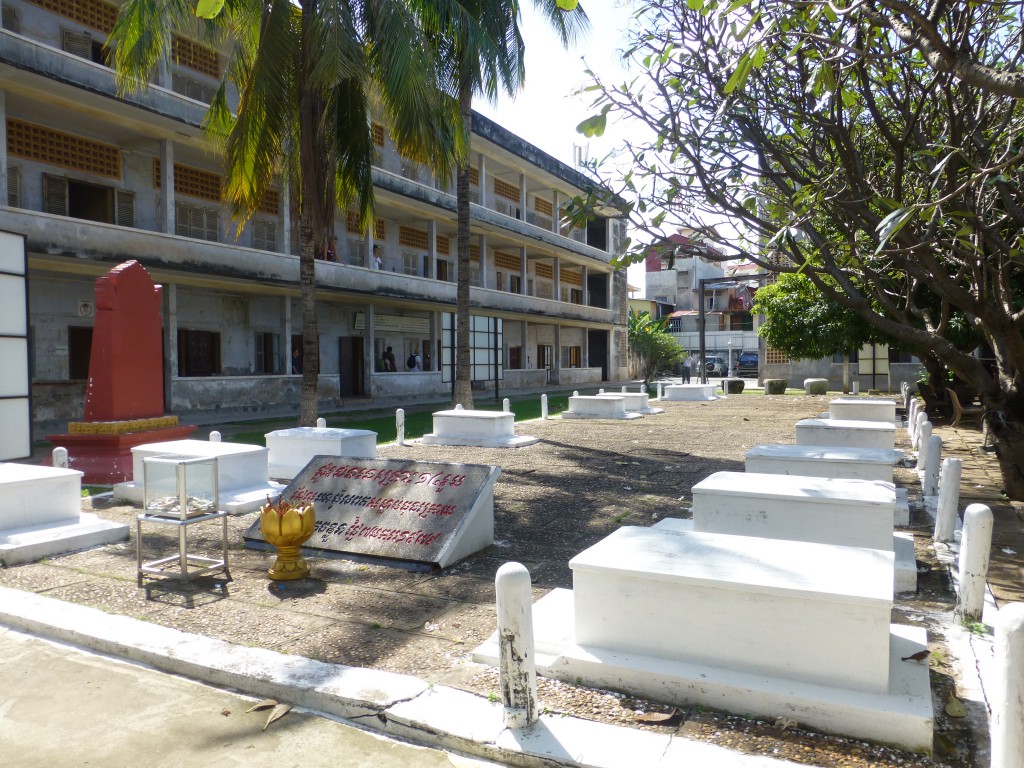
The school as it was – Former Office S21
When the regime ended in 1979, there were still a few survivors in the school. In addition, some deceased were found who now have a dignified grave on the grounds. The school still looks as it did back then. In many classrooms stand the beds where the tortures took place, bare metal beds with chains.
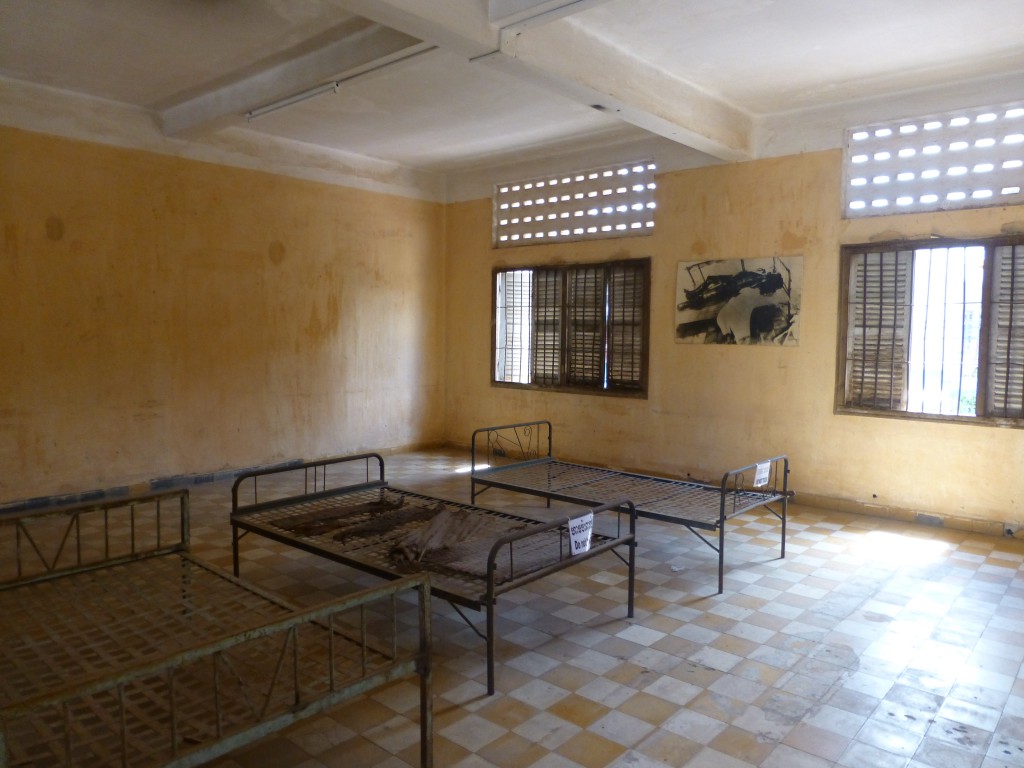
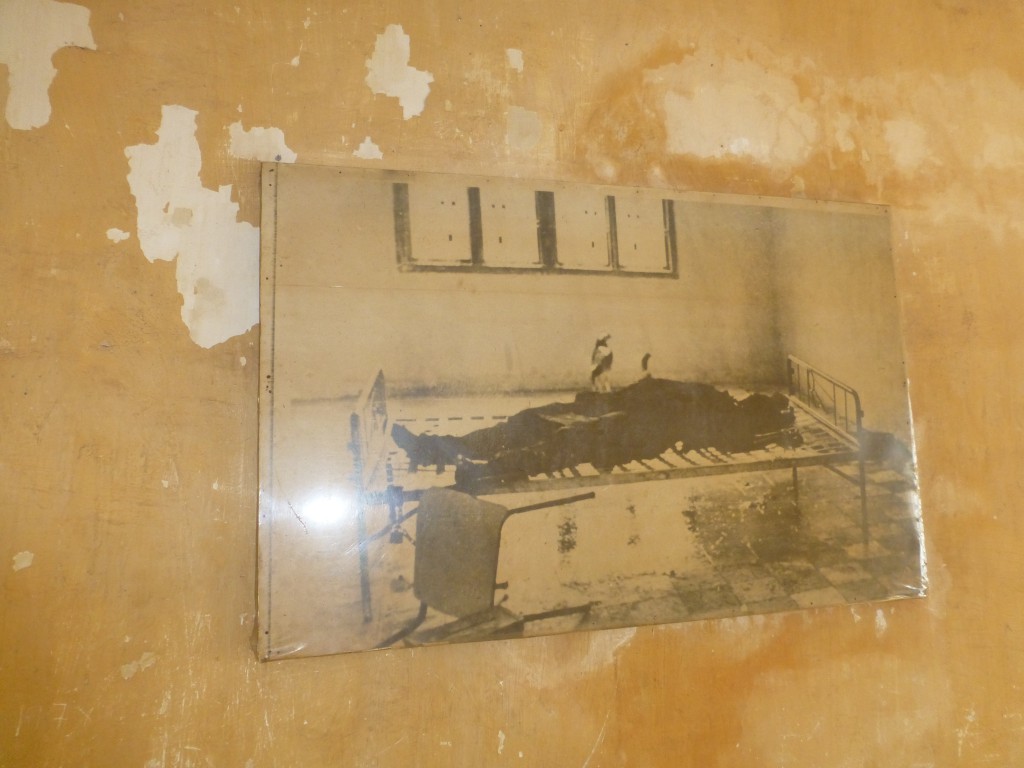
The cells – dark and claustrophobic
In the second building, the cells can be seen. This building is surrounded by barbed wire. The cells are made of wood or of stone and iron. They are extremely small and dark, without any facilities. There was only a bucket and there was a chain to which the prisoner was attached.
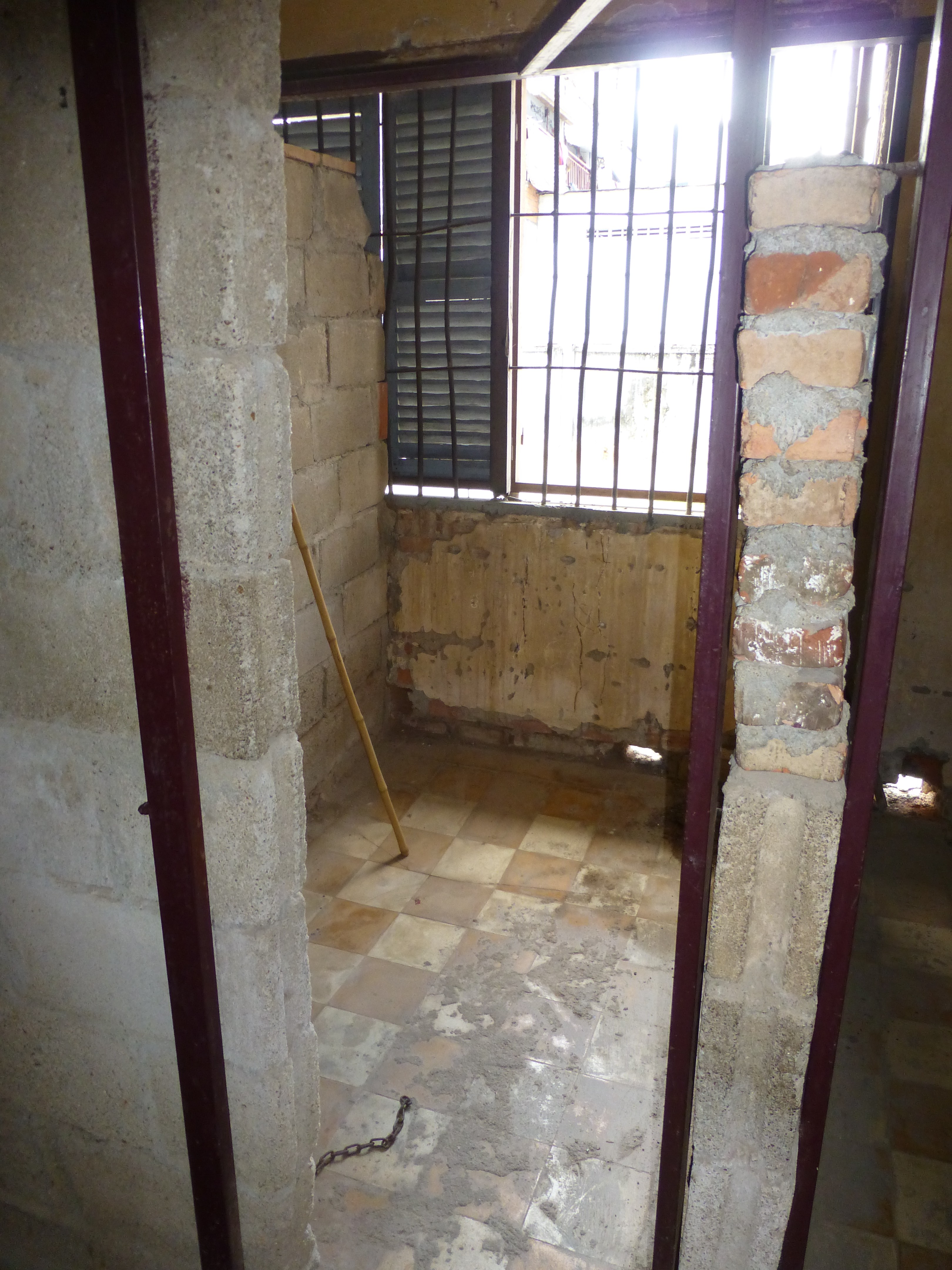
The stone and iron cells are located on the ground floor. One floor up, they were made of wood.
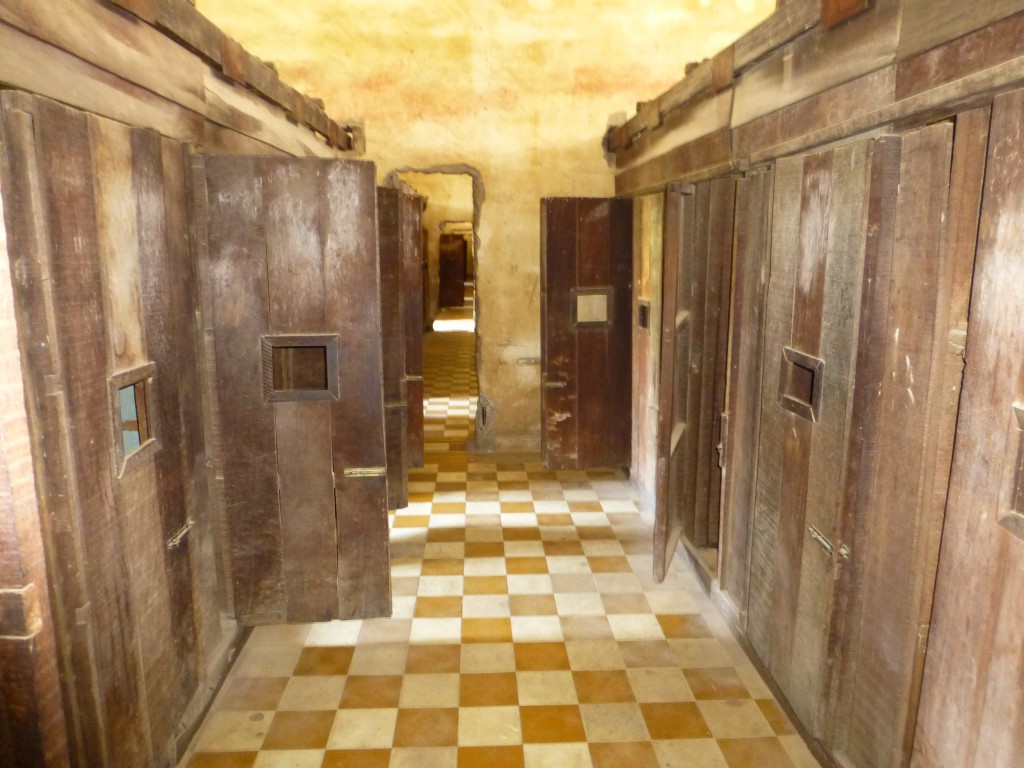
The realization began to sink in… I walked around there for quite a while. I really felt sick. So much misery, so much horror, and so terribly recent.
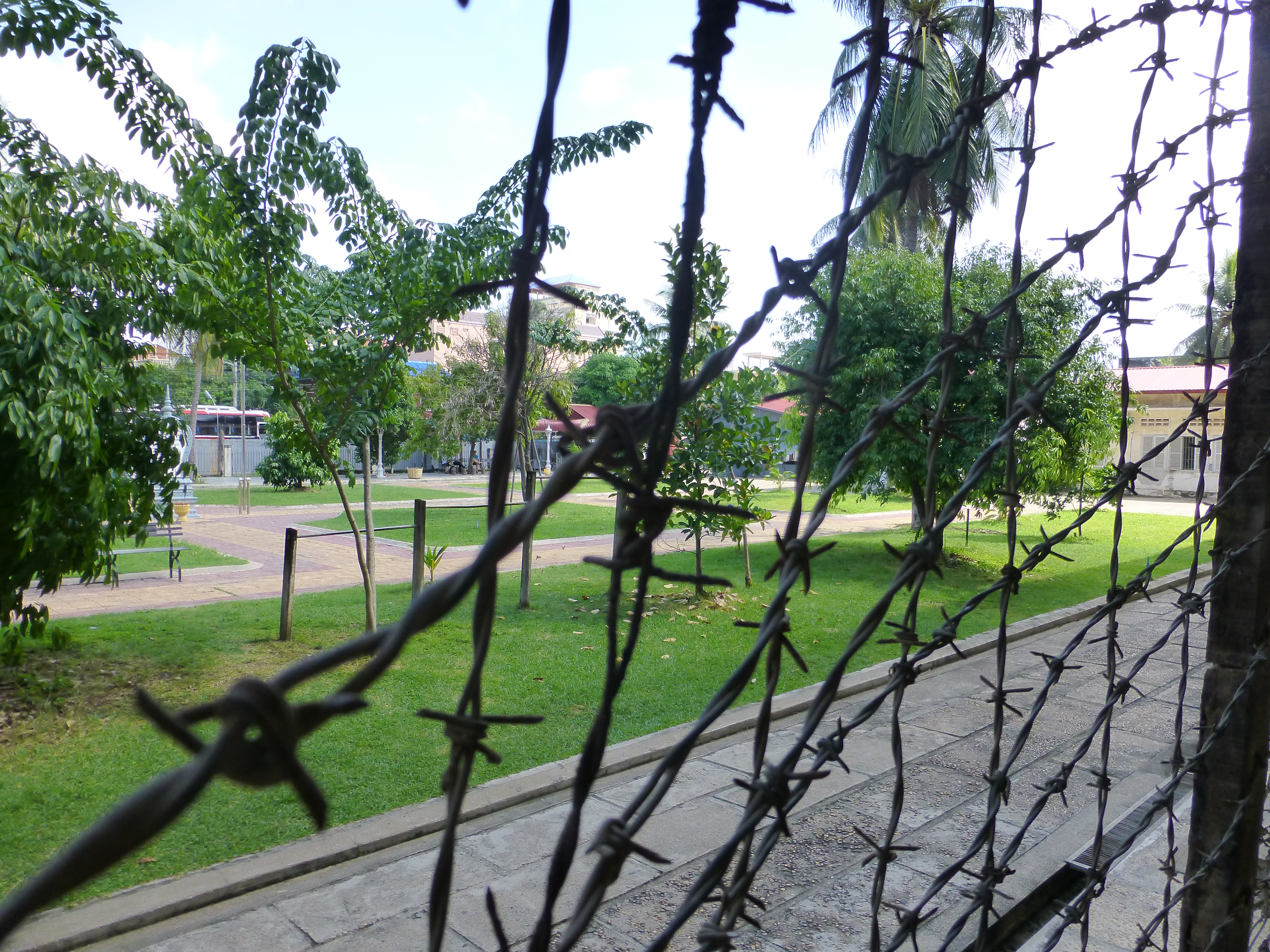
What struck me most: many people I saw walking on the street in Phnom Penh, my age or older, had also experienced this themselves. They had experienced this firsthand. It’s truly incomprehensible.
Practical information for your visit
Opening hours and admission prices
Choeung Ek (Killing Fields)
- Open daily from 08:00 to 17:30
- Admission: $6 per person
- Audio guide: included with admission
Tuol Sleng Museum (S-21)
- Open daily from 08:00 to 17:00
- Admission: $5 per person
- Audio guide: $3 extra (definitely worth it)
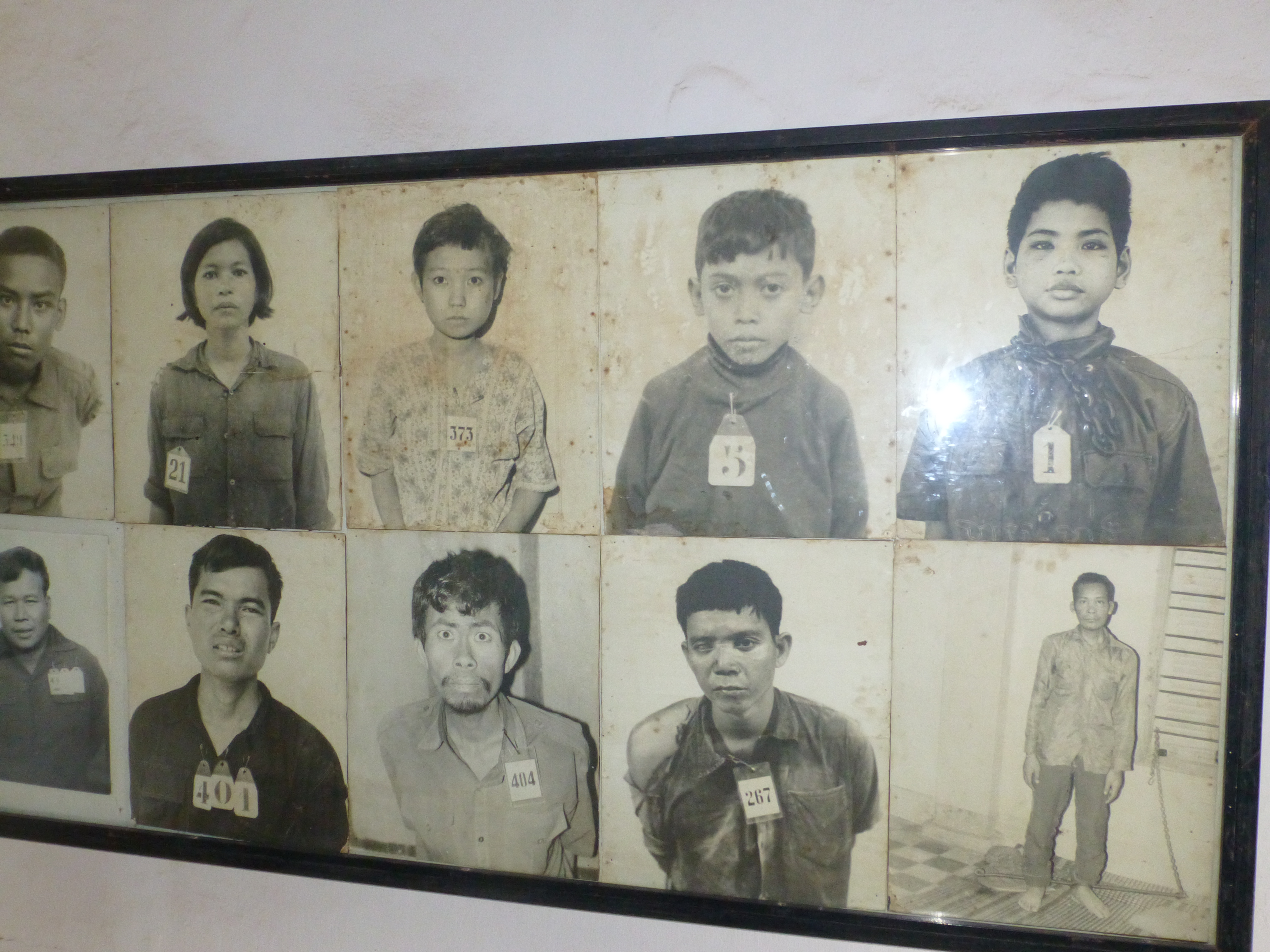
How much time should you plan?
- Choeung Ek: Count on at least 2 hours
- Tuol Sleng: Plan 1.5 to 2 hours
- Both locations: Half a day minimum, preferably a full day with breaks
What to wear and how to behave?
- Cover your shoulders and knees, this is a sign of respect
- Speak softly and behave respectfully
- Photography is allowed, but be tactful about it
- Remember: these are not tourist attractions but memorial sites
Arranging transport
From Phnom Penh:
By Tuk-tuk
- Killing Fields retour: €13
- Both locations (Tuol Sleng + Killing Fields): €19
- Private tour: $30-45 per person
- Book a tour with a guide here
The Killing Fields are about half an hour’s drive from the center. Tuol Sleng is located in the city itself and is easier to reach.
Staying overnight in Phnom Penh
I recommend staying at least 2 to 3 nights in Phnom Penh. Then you also have time for other attractions such as the Royal Palace and the pleasant Riverside.
View the best accommodations in Phnom Penh here for every budget.
The area around Riverside and BKK1 are ideal for good restaurants and nightlife.
Also check out these popular options:
- Budget: Mad Monkey Hostel, Onederz
- Mid-range: Khmer Surin Guesthouse, The Peninsula, The Frangipani (where I stayed)
- Luxury: Pavilion Hotel, Raffles Hotel Le Royal, Plantation Urban Resort & Spa
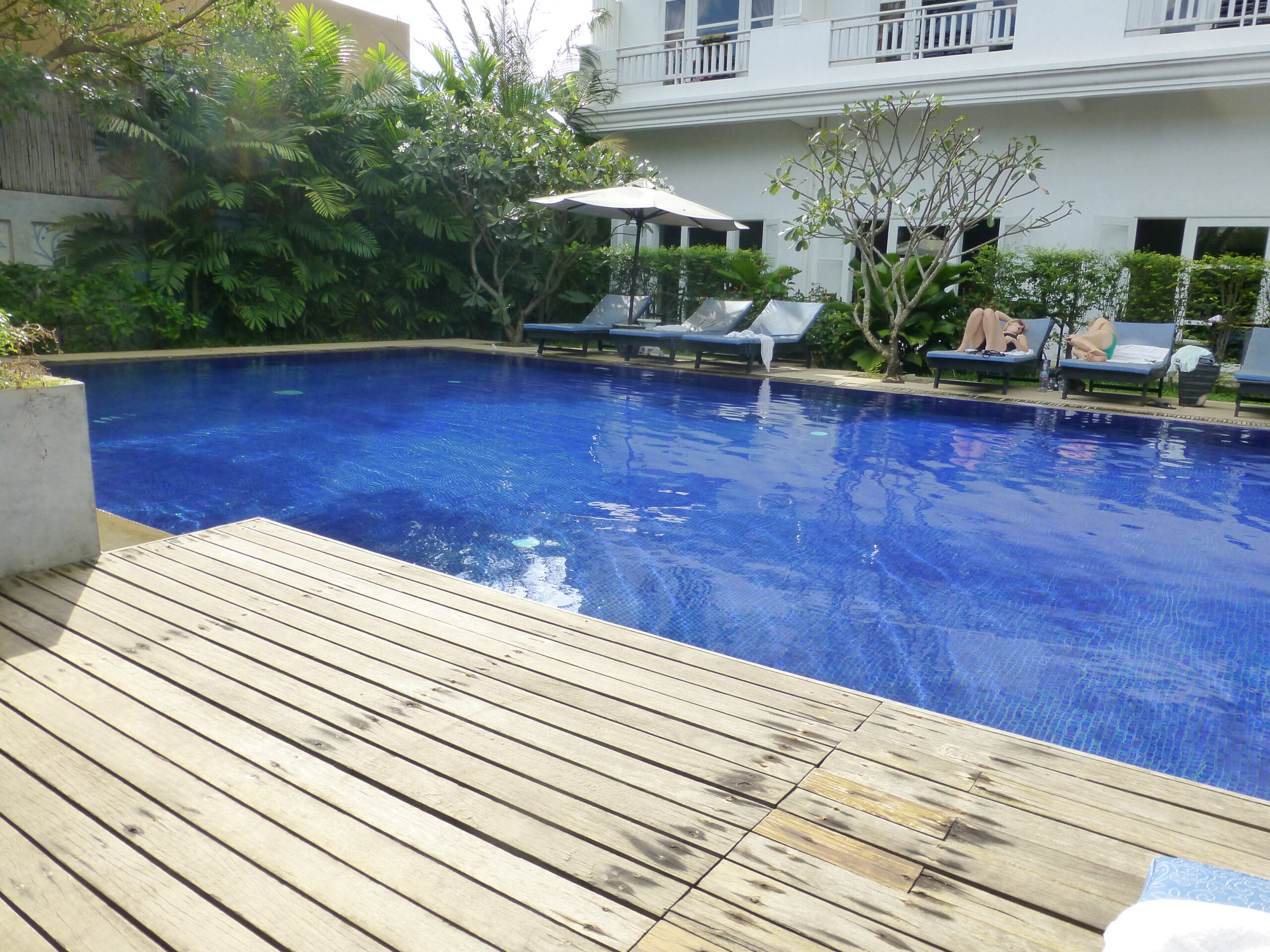
Frequently Asked Questions – FAQ
- Is this visit suitable for children?
Due to the extremely confronting images and stories, I recommend a minimum age of 16 years. It’s emotionally heavy, even for adults. Think carefully about whether you want to expose your children to this. - Should I book a guide or is the audio guide sufficient?
The audio guide at Choeung Ek is very complete and informative. For extra context and the opportunity to ask questions, a guide definitely adds value. At Tuol Sleng, a guide can help you process all the information. - Can I visit both places in one day?
Yes, that’s certainly possible. Many visitors do this. Start early with Tuol Sleng in the city, and then visit the Killing Fields. Be aware though: it’s emotionally quite heavy. A combination tour arranges everything for you. - May I take photographs?
Yes, photography is allowed. Be respectful though, especially at the skulls and towards other visitors who are emotional. In some places, you’re asked not to photograph, respect that. - When did the genocide take place?
The Khmer Rouge regime under Pol Pot lasted from April 1975 to January 1979. In those four years, 1.7 to 2.5 million people lost their lives, almost a quarter of the population.
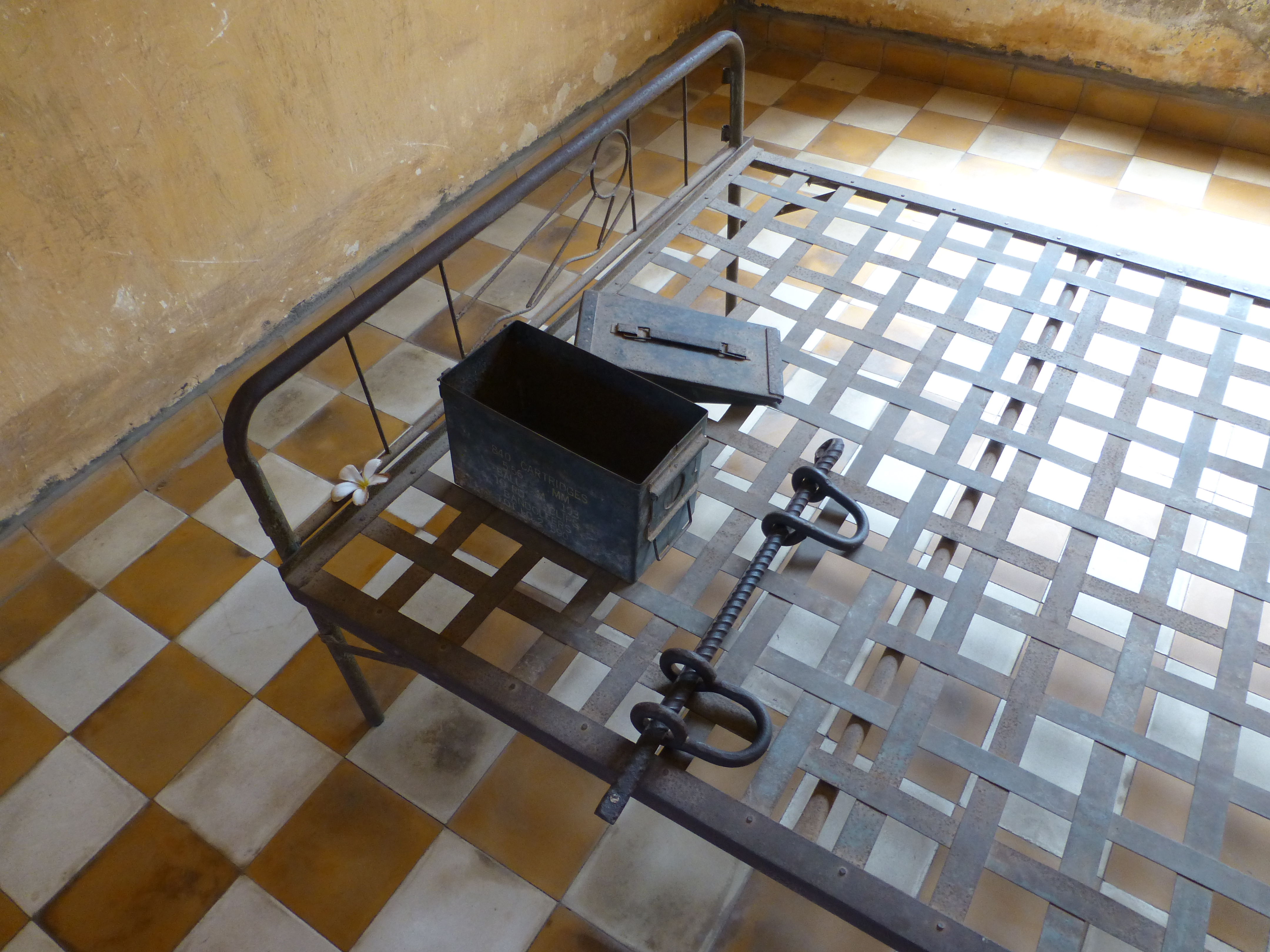
My personal conclusion
Visiting the Killing Fields and Tuol Sleng is not pleasant, but it is an experience you’ll never forget. It forces you to reflect on the horrors that people are capable of. But also on the resilience of those who survived and the importance of remembering.
These places are not tourist attractions in the classic sense. They are important memorial sites that remind us that genocide is not something far removed from our lives. It happened here just 50 years ago. And it’s still happening, everywhere in the world.
If you go to Cambodia, take the time for this visit. It’s emotionally heavy, perhaps the heaviest part of your trip. But it’s essential to truly understand the Cambodian people and their history.
